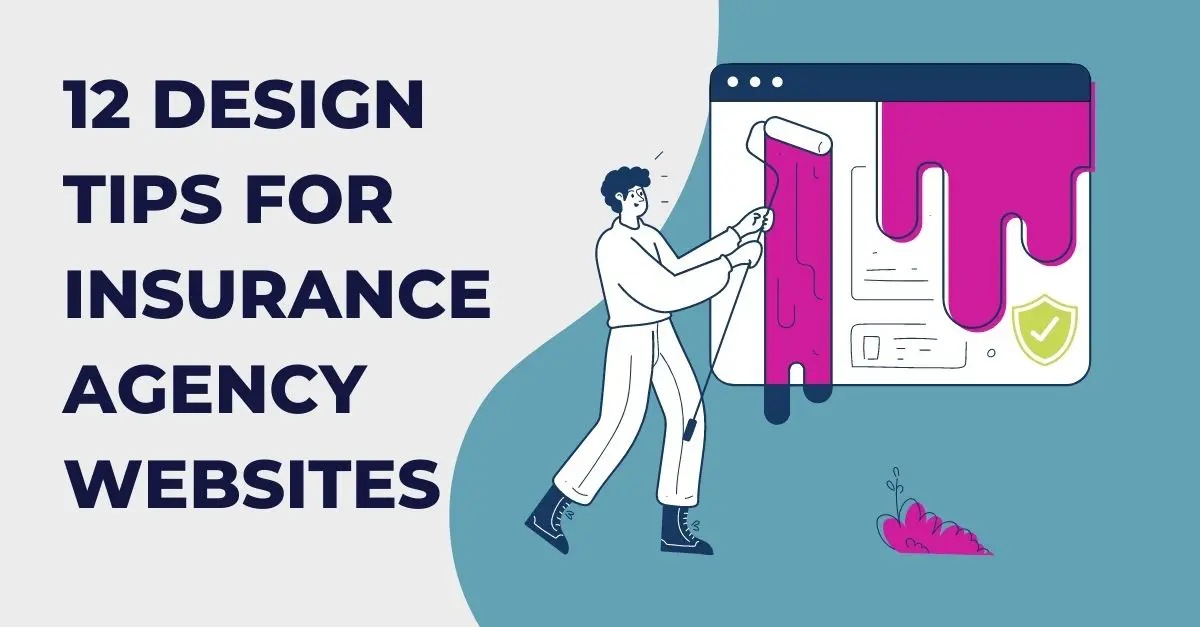

Finance
How To Start Your Own Insurance Agency
Modified: December 29, 2023
Looking to start your own insurance agency? Learn the ins and outs of the finance industry and discover the steps to successfully launch your business.
(Many of the links in this article redirect to a specific reviewed product. Your purchase of these products through affiliate links helps to generate commission for LiveWell, at no extra cost. Learn more)
Table of Contents
- Introduction
- Understanding the Insurance Industry
- Defining Your Target Market
- Creating a Business Plan
- Securing Licensing and Legal Requirements
- Setting up Office Space and Equipment
- Building a Team
- Establishing Relationships with Insurance Carriers
- Developing Marketing Strategies
- Implementing Customer Relationship Management Systems
- Setting Competitive Pricing and Commission Structures
- Managing Operations and Claims Processing
- Providing Ongoing Customer Support
- Monitoring and Evaluating Agency Performance
- Conclusion
Introduction
Welcome to the world of insurance entrepreneurship! Starting your own insurance agency can be an exciting and rewarding venture. With a deep understanding of the finance industry and a strategic approach, you can build a successful agency that helps individuals and businesses protect their most valuable assets.
However, embarking on this journey requires careful planning, thorough research, and a solid foundation. In this article, we will guide you through the essential steps to start your own insurance agency. From understanding the industry to developing effective marketing strategies, we will provide you with the knowledge and tools you need to succeed.
Before diving into the intricate details, it’s important to recognize the ever-growing demand for insurance coverage. As the economy continues to evolve and people become more aware of the importance of protecting themselves financially, the insurance market remains robust. This presents a unique opportunity for aspiring insurance agency owners.
While establishing an insurance agency may seem daunting, the key lies in strategic planning and attention to detail. By following the steps outlined in this article, you can lay a strong foundation for your agency’s success. From defining your target market to securing licensing and establishing relationships with insurance carriers, each step plays a crucial role in building a solid business.
It’s important to note that starting an insurance agency requires thorough knowledge of insurance products, sales skills, and an understanding of legal and regulatory requirements. If you are new to the industry, you may need to acquire additional training or partner with experienced professionals who can provide guidance along the way.
Now, let’s dive into the various steps involved in starting your own insurance agency. Whether you are a seasoned professional looking to venture into entrepreneurship or a newcomer to the finance industry, this guide will equip you with the tools and insights to successfully launch your own insurance agency.
Understanding the Insurance Industry
Before diving headfirst into starting your own insurance agency, it’s crucial to have a solid understanding of the insurance industry as a whole. This knowledge will not only help you navigate the complexities of the market but also position your agency for long-term success.
The insurance industry is a vast and multifaceted sector that provides coverage and financial protection against various risks. Insurance agencies play a crucial role in this industry by acting as intermediaries between individuals or businesses seeking insurance coverage and insurance carriers that provide the policies.
There are several types of insurance that individuals and businesses typically seek, including life insurance, health insurance, property insurance, auto insurance, and business liability insurance, among others. Each type of insurance has its own intricacies and regulations, so having a comprehensive understanding of the different lines of insurance is vital.
In addition to knowing the various types of insurance, it’s essential to stay updated on industry trends, market conditions, and regulatory changes. This will enable you to offer your clients the most relevant and up-to-date insurance solutions.
Furthermore, understanding the target market for insurance products is critical for your agency’s success. Different demographics and industries have specific insurance needs, and tailoring your offerings to specific market segments can give you a competitive advantage.
It’s also important to recognize the role technology plays in the insurance industry. With the rise of digitalization, insurance agencies have increasingly relied on technology to streamline operations, enhance customer service, and improve efficiency. Familiarizing yourself with insurance agency software, customer relationship management systems, and online marketing techniques can give you an edge over competitors.
Lastly, staying informed about the regulatory landscape and compliance requirements is crucial. Insurance is a highly regulated industry, and failure to meet legal obligations can result in severe consequences for your agency. Keep yourself updated on state and federal insurance regulations, licensing requirements, and ongoing professional education.
By having a sound understanding of the insurance industry, you can position your agency as a knowledgeable and trusted advisor. This will not only help you attract and retain clients but also foster strong relationships with insurance carriers, which are essential for long-term success in the industry.
Defining Your Target Market
One of the crucial aspects of starting your own insurance agency is defining your target market. Identifying and understanding your ideal customers will help you create tailored insurance solutions, develop effective marketing strategies, and build long-lasting relationships with your clients.
When defining your target market, it’s important to consider various factors such as demographics, behaviors, and specific insurance needs. Here are some steps to help you define your target market:
- Conduct Market Research: Start by conducting thorough market research to identify potential customer segments. Look for insights on trends, purchasing behaviors, and insurance needs within different demographics and industries. This will help you uncover opportunities and better understand your potential clients.
- Segmentation: Once you have gathered market research data, segment your target market into specific groups based on key factors such as age, income level, location, and occupation. This will allow you to create personalized insurance offerings and marketing messages that resonate with each segment.
- Niche Market Focus: Consider specializing in a niche market within the insurance industry. By focusing on a specific group or industry, you can position yourself as an expert and tailor your services to meet the unique needs of that market. This can give you a competitive advantage and attract clients seeking specialized insurance coverage.
- Customer Personas: Develop detailed customer personas, which are fictional representations of your ideal clients. Consider their demographics, goals, challenges, and motivations. This exercise will help you better understand and empathize with your target market, enabling you to create effective marketing campaigns and personalized services.
- Competitive Analysis: Analyze your competitors’ target markets to identify gaps and opportunities. By understanding who your competitors are targeting, you can differentiate yourself by focusing on underserved market segments or offering additional services that meet specific customer needs.
Remember, the more you know about your target market, the better you can meet their needs and position your agency as their go-to insurance provider. Tailoring your services and marketing efforts to address their specific pain points and aspirations will help you attract and retain clients in a highly competitive industry.
Once you have defined your target market, it’s important to continuously monitor and reassess your target market strategy as market conditions and customer preferences may change over time. Stay agile and adapt your approach to ensure your agency remains relevant and responsive to the evolving needs of your target market.
Creating a Business Plan
A well-crafted business plan is the backbone of any successful insurance agency. It serves as a roadmap that outlines your agency’s goals, strategies, and financial projections. A comprehensive business plan not only helps you navigate the early stages of your agency but also attracts potential investors and lenders.
Here are the key components to include when creating your insurance agency’s business plan:
- Executive Summary: Provide a concise overview of your agency, including your mission statement, target market, competitive advantage, and the key highlights of your business plan.
- Agency Description: Describe your agency’s structure, legal status, and any unique attributes that differentiate it from other insurance agencies. Explain your agency’s core values and the types of insurance products you will offer.
- Market Analysis: Conduct a thorough analysis of the insurance market, including target market demographics, industry trends, competitors, and potential challenges. Use data and research to support your analysis.
- Marketing and Sales Strategies: Outline your marketing plan and strategies for reaching and attracting potential clients. Discuss the channels and tactics you will use to promote your agency and generate leads. Include details about your sales process and how you will convert leads into clients.
- Operations and Management: Describe the organizational structure of your agency and the roles and responsibilities of key team members. Include information about the technology and systems you will use to streamline operations and enhance efficiency.
- Financial Projections: Present detailed financial forecasts, including projected revenue, expenses, and profitability over the next three to five years. Include information on your startup costs and sources of funding.
- Risk Analysis: Identify potential risks and challenges that could affect your agency and discuss strategies to mitigate them. This could include regulatory changes, economic downturns, or changes in client preferences.
- Growth and Expansion Plan: Outline your plans for scaling and expanding your agency. This could include adding additional service lines, expanding into new geographic markets, or acquiring other agencies.
- Exit Strategy: While it may seem premature to think about an exit strategy, outlining your long-term plans demonstrates foresight and can be attractive to potential investors. Discuss options such as selling the agency or passing it onto a successor.
Creating a robust and comprehensive business plan takes time and research. Be sure to gather as much data as possible and seek input from experienced professionals in the industry. Constantly revisit and update your business plan as your agency grows and market conditions evolve.
A well-crafted business plan not only serves as a guide for your agency’s growth and success but also demonstrates your professionalism and commitment. It shows potential investors and lenders that you have a clear vision and a strategic approach, increasing your chances of securing funding and support for your agency.
Securing Licensing and Legal Requirements
Securing the necessary licenses and meeting the legal requirements is a critical step in starting your own insurance agency. Compliance with state and federal regulations ensures that your agency operates legally and ethically, protecting both your clients and your business.
The specific licensing requirements vary by state, so it’s essential to research and understand the regulations in the jurisdiction where you plan to operate. Here are some general steps to help you navigate the licensing process:
- Research Licensing Requirements: Familiarize yourself with the insurance licensing requirements in your state. Determine the types of licenses you will need based on the lines of insurance you plan to sell, such as life insurance, health insurance, or property and casualty insurance.
- Pre-Licensing Education: Complete any pre-licensing education courses required by your state. These courses are designed to ensure that insurance professionals have a strong foundation in insurance concepts, ethics, and industry regulations.
- Exam Preparation and Licensing Exams: Prepare for and pass the licensing exams administered by your state’s insurance department. These exams assess your knowledge of insurance laws, coverage types, ethics, and consumer protection.
- Background Checks and Fingerprints: Some states may require background checks and fingerprinting as part of the licensing process. Ensure that you comply with these requirements and provide the necessary documentation.
- Obtain Errors and Omissions Insurance: Errors and omissions (E&O) insurance is designed to protect insurance agents and agencies from claims of negligence or inadequate advice. Check whether your state requires E&O insurance and acquire a policy that meets the specified coverage limits.
- Apply for Agency Licensing: Once you have obtained your individual license, you can proceed with applying for agency licensing. This involves submitting an application, paying the required fees, and providing documentation such as proof of E&O insurance and business registration.
- Maintain Continuing Education: After obtaining your license, you will be required to complete continuing education courses to stay up to date with industry changes and maintain your license. Familiarize yourself with the specific continuing education requirements in your state.
It’s important to note that licensing requirements may vary for independent insurance agencies and agencies affiliated with a specific insurance company or franchise. Be sure to understand the regulations that pertain to your specific agency type.
In addition to licensing requirements, there may be other legal obligations to consider. These can include registering your business with the appropriate government agencies, obtaining a tax identification number, and complying with data protection and privacy laws.
Consult with an attorney or regulatory expert who specializes in insurance to ensure that you have met all the necessary licensing and legal requirements specific to your agency’s jurisdiction. Compliance with these requirements will help build trust with clients and provide a solid foundation for the long-term success of your agency.
Setting up Office Space and Equipment
The next step in starting your own insurance agency is setting up your office space and acquiring the necessary equipment. A well-equipped and organized office provides a professional and efficient environment for you and your team to serve clients effectively.
Here are some considerations when setting up your office space:
- Location: Choose a location for your office that is convenient for both clients and employees. Consider factors such as accessibility, parking, and proximity to other businesses. Evaluate whether you prefer a standalone office or joining a shared office space.
- Layout and Design: Plan the layout of your office to facilitate easy communication and collaboration. Consider ergonomic furniture, a welcoming reception area, and private spaces for client meetings. Optimize the use of natural light to create a comfortable and productive work environment.
- Technology Infrastructure: Invest in the necessary technology infrastructure to support your agency’s operations. This includes reliable internet connectivity, computer systems, printers, and other office equipment. Consider cloud-based software solutions for document management, customer relationship management, and agency management systems.
- Communication Tools: Implement effective communication tools to stay connected with clients and team members. This may include phone systems, video conferencing software, and email services. Prioritize security measures, such as encrypted emails and secure file sharing platforms, to protect sensitive client data.
- Data Security: Protect your agency and client information by implementing robust data security measures. This includes firewalls, antivirus software, regular data backups, and strict data access controls. Ensure compliance with regulatory requirements regarding data protection and privacy.
- Office Supplies: Stock up on essential office supplies such as stationery, pens, paper, folders, and basic office equipment. Consider the needs of your team and clients when selecting office supplies to ensure smooth day-to-day operations.
- Client Comfort: Create a welcoming atmosphere for your clients. Provide comfortable seating areas, refreshments, and a well-designed reception area. Pay attention to small details that can enhance the client experience and demonstrate your professionalism.
- Insurance Coverage: Don’t forget to secure appropriate insurance coverage for your office space and equipment. This can include property insurance to protect against damage or theft, liability insurance to cover potential accidents or injuries, and cybersecurity insurance to safeguard against data breaches.
Consider budget constraints when setting up your office space and determining the equipment you need. Prioritize the essentials and gradually expand as your agency grows. Leasing office equipment or exploring second-hand options can also help reduce upfront costs.
Lastly, ensure that your office space complies with local zoning and building codes. Consult with authorities or professionals in your area to ensure that your office space meets the necessary legal requirements.
By setting up an efficient and well-equipped office space, you can create a professional environment that not only reflects the values of your agency but also enhances productivity and client satisfaction.
Building a Team
Building a competent and cohesive team is crucial for the success of your insurance agency. As your agency grows, you will need to recruit talented individuals who align with your agency’s values and work towards a common goal. Here are some steps to help you build a strong team:
- Define Roles and Responsibilities: Clearly define the roles and responsibilities needed within your agency. Determine the skills, qualifications, and experience required for each position. This will help you identify the right candidates for the job.
- Recruitment and Hiring: Develop a strategic recruitment plan to attract top talent. Leverage online job boards, industry networks, and social media platforms to increase visibility. Conduct thorough interviews and background checks to ensure you hire individuals who possess the necessary skills and fit within your agency’s culture.
- Training and Development: Invest in training and development programs to enhance the skills of your team members. Provide them with the necessary resources, tools, and opportunities to expand their knowledge and expertise. This will not only improve their performance but also foster loyalty and a sense of career growth.
- Communication and Collaboration: Foster open and transparent communication within your team. Encourage teamwork, collaboration, and the exchange of ideas. Regular team meetings, progress updates, and feedback sessions will help build a cohesive and motivated workforce.
- Leadership Development: Cultivate leadership within your team by identifying individuals with leadership potential. Provide them with mentorship, training, and opportunities to take on additional responsibilities. Developing strong leaders will contribute to the overall growth and success of your agency.
- Culture and Employee Engagement: Create a positive and supportive work environment that values diversity, inclusivity, and work-life balance. Recognize and appreciate the achievements and hard work of your team members. Foster a culture of continuous improvement, collaboration, and innovation.
- Performance Evaluation: Implement a performance evaluation system that measures individual and team performance against set goals and key performance indicators. Provide regular feedback and recognition for accomplishments. Address performance issues promptly and offer support and guidance for improvement.
- Retaining Top Talent: Develop a retention strategy to keep top-performing employees within your agency. Offer competitive compensation, benefits packages, and opportunities for growth and advancement. Provide a positive and fulfilling work environment that encourages loyalty and job satisfaction.
Remember, building a team is not just about finding skilled individuals; it’s about creating a motivated and cohesive group that shares your agency’s values and goals. By investing in the development and well-being of your team, you will create a positive company culture that attracts and retains top talent.
Additionally, as your team grows, consider the importance of diversity and inclusion. Embrace different perspectives, backgrounds, and experiences, as they can contribute to a more innovative and successful agency.
Building a strong team requires time and effort, but it is a worthwhile investment. A talented and cohesive team will be the driving force behind your agency’s growth and success, delivering exceptional service to your clients and positioning your agency as a trusted industry leader.
Establishing Relationships with Insurance Carriers
Establishing strong relationships with insurance carriers is essential for the success of your insurance agency. Insurance carriers provide the policies and coverage that you offer to your clients, so building a network of reliable and supportive carrier partnerships is crucial. Here’s how you can establish these relationships:
- Research and Selection: Conduct thorough research on insurance carriers that align with your agency’s target market and the types of insurance products you plan to offer. Consider factors such as carrier reputation, financial stability, product offerings, and underwriting guidelines.
- Networking and Industry Events: Attend industry conferences, seminars, and networking events to connect with insurance carrier representatives. These events provide opportunities to meet face-to-face, build relationships, and gain insights into carrier requirements and preferred agencies.
- Reach Out to Insurance Carrier Representatives: Contact carrier representatives directly to express your interest in partnering with them. Prepare an elevator pitch that highlights your agency’s strengths, target market, and value proposition. Show genuine enthusiasm and demonstrate how partnering with their carrier will benefit both parties.
- Demonstrate Expertise and Compliance: Insurance carriers value agencies that demonstrate expertise in insurance products and maintain high standards of compliance. Invest in ongoing education and training to stay updated on industry trends and regulations. Compliance with carrier guidelines and ethics will help you earn their trust and enhance your chances of partnership.
- Meet Carrier Requirements: Each insurance carrier has its own set of requirements for partnering with agencies. Familiarize yourself with their guidelines, such as minimum production quotas, licensing requirements, and agency performance metrics. Ensure that you meet these requirements to be considered for a partnership.
- Provide a Business Plan: Present a comprehensive business plan that outlines your agency’s goals, target market, marketing strategies, and growth plans. This will demonstrate your professionalism and commitment to achieving mutually beneficial outcomes.
- Communicate and Collaborate: Establish regular communication channels with carrier representatives to build trust and rapport. Collaborate on marketing efforts, training programs, and underwriting processes. Maintain transparent communication about your agency’s performance, challenges, and growth opportunities.
- Deliver Exceptional Service: Provide exceptional service to your clients and ensure timely and accurate policy submissions and claims handling. Insurance carriers appreciate agencies that prioritize client satisfaction and exceed expectations.
- Regular Performance Review: Assess your agency’s performance against carrier expectations and metrics. Review production reports, loss ratios, and other key performance indicators. Discuss strategies to improve performance and address any concerns or challenges.
Remember, building relationships takes time and ongoing effort. It’s important to nurture and maintain these partnerships through consistent communication, professionalism, and a commitment to understanding and meeting the needs of both your clients and the carrier.
Developing strong relationships with insurance carriers is mutually beneficial. As you grow your agency and bring in more business, carriers will recognize your agency as a valuable partner. This can lead to preferential treatment, access to exclusive products, and enhanced support from carriers, ultimately benefiting your agency and your clients.
Developing Marketing Strategies
Developing effective marketing strategies is essential for the growth and success of your insurance agency. It helps you reach your target market, build brand awareness, generate leads, and ultimately convert prospects into loyal clients. Here are key steps to guide you in developing your marketing strategies:
- Identify your Target Market: Clearly define your target market and understand their demographics, behaviors, and insurance needs. This will help you tailor your marketing messages and tactics to resonate with your ideal clients.
- Create a Strong Brand Identity: Develop a strong and distinctive brand identity that aligns with your agency’s values and resonates with your target market. This includes a memorable logo, consistent visual elements, and a unique value proposition that sets you apart from competitors.
- Build a Professional Website: Design and develop a professional website that serves as the digital face of your agency. Ensure it is mobile-friendly, user-friendly, and optimized for search engines. Clearly communicate your services, share valuable content, and make it easy for visitors to contact you.
- Content Marketing: Create valuable and relevant content that educates, engages, and attracts your target audience. This can include blog posts, articles, videos, infographics, and social media posts. Position yourself as a trusted advisor by sharing insights and expertise related to insurance and financial topics.
- Social Media Presence: Establish a presence on social media platforms where your target audience spends time. Use platforms like Facebook, LinkedIn, Twitter, and Instagram to share content, engage with followers, and promote your agency. Leverage social media advertising to expand your reach and target specific demographics.
- Search Engine Optimization (SEO): Optimize your website with relevant keywords, meta-tags, and quality content to improve your visibility in search engine results. This will help increase organic traffic to your website and attract potential clients who are actively searching for insurance solutions.
- Pay-per-click (PPC) Advertising: Consider running PPC advertising campaigns on search engines like Google or social media platforms. Target specific keywords, demographics, and geographic areas to reach potential clients who are actively searching for insurance-related terms.
- Email Marketing: Build an email list of prospects and clients and regularly send out informative newsletters, updates, and special offers. Personalize your emails to make them relevant and engaging. Use automation tools to streamline the process and track engagement metrics.
- Referral Programs: Implement referral programs to encourage satisfied clients, business partners, and professional contacts to refer new clients to your agency. Offer incentives or rewards for successful referrals, creating a win-win situation for both your agency and your referrals.
- Monitor, Analyze, and Adapt: Regularly monitor and analyze the performance of your marketing strategies. Use web analytics, social media insights, and client feedback to measure the effectiveness of your efforts. Adapt your strategies based on these insights to optimize your results.
Remember, consistency and a multi-channel approach are key to successful marketing. Develop a well-rounded marketing plan that utilizes a combination of digital and traditional marketing channels to reach and engage your target audience.
Building a strong online presence, delivering valuable content, and fostering meaningful relationships with your audience will position your agency as a trusted resource in the insurance industry. With effective marketing strategies in place, you can attract and retain clients while building a strong brand reputation.
Implementing Customer Relationship Management Systems
Implementing a customer relationship management (CRM) system is crucial for effectively managing and nurturing your relationships with clients. A CRM system helps streamline your agency’s operations, improve customer service, and drive growth. Here are key considerations when implementing a CRM system:
- Assess Your Agency’s Needs: Identify the specific needs and goals of your agency to determine the features and functionality required in a CRM system. Consider factors such as lead management, contact management, policy tracking, task scheduling, and reporting capabilities.
- Research CRM Options: Conduct thorough research on CRM software options that cater to the insurance industry. Consider factors such as affordability, ease of use, scalability, and integration capabilities with other software solutions.
- Choose a CRM Vendor: Select a reputable CRM vendor that aligns with your agency’s needs and meets your budget constraints. Request demos, read reviews, and seek recommendations from industry peers to ensure you choose the right solution for your agency.
- Customization and Integration: Determine if the CRM solution allows for customization to fit your agency’s specific workflows and processes. Ensure that it integrates seamlessly with your existing systems such as your agency management system, email marketing platform, and other essential tools.
- Data Migration: Develop a plan for migrating your existing client data into the CRM system. Cleanse and organize your data to ensure accuracy and consistency. Work closely with the CRM vendor to ensure a smooth and successful data migration process.
- Staff Training and Adoption: Provide comprehensive training to your team members on how to effectively use the CRM system. Encourage adoption by demonstrating the benefits and efficiencies it will bring to their daily tasks and client interactions. Assign a CRM champion within your agency to drive adoption and provide ongoing support.
- Workflow Automation: Leverage the CRM system’s automation features to streamline your agency’s workflows. Automate routine tasks, such as sending follow-up emails, scheduling policy renewals, and tracking client interactions. This will save time, reduce errors, and improve overall efficiency.
- Centralized Client Information: Utilize the CRM system to maintain a centralized client database. Store client information, policy details, communication history, and notes in one secure location. This allows any team member to access and update client information, ensuring consistency and providing a holistic view of each client’s relationship with your agency.
- Client Communication and Segmentation: Leverage the CRM system’s communication tools to effectively engage with your clients. Segment your client database based on demographics, policies, or other relevant factors, allowing targeted and personalized communication. Send automated emails, newsletters, policy updates, and special offers to nurture client relationships.
- Performance Tracking and Reporting: Utilize the reporting capabilities of the CRM system to monitor and track key performance indicators (KPIs). Gain insights into client acquisition, retention rates, policy renewal rates, and other metrics to measure the success of your agency’s efforts. Use these insights to optimize your marketing and client retention strategies.
Implementing a CRM system may require initial investment and a learning curve, but the benefits in terms of efficiency, client service, and growth potential are well worth it. A well-implemented CRM system will help you effectively manage client relationships, personalize communication, and drive business growth for your insurance agency.
Setting Competitive Pricing and Commission Structures
Setting competitive pricing and commission structures is a critical aspect of running a successful insurance agency. The right pricing strategy ensures that your agency remains competitive in the market while maintaining profitability. Here are key considerations to help you set competitive pricing and commission structures:
- Market Research: Conduct thorough market research to understand the pricing landscape for the insurance products you offer. Analyze your competitors’ pricing strategies and identify the average premiums in your target market. This will provide insights to help you set your pricing at a competitive level.
- Underwriting and Risk Assessment: Consider the underwriting process and risk assessment when setting pricing. Accurately assess the risks associated with different policies and adjust premiums accordingly. Pricing should reflect the level of risk and the value of coverage provided to clients.
- Coverage Options and Enhancements: Offer a range of coverage options and enhancements that cater to different client needs. Consider creating tiered pricing structures that offer basic coverage at a lower price and additional coverage options at higher price points. This allows clients to customize their policies while generating additional revenue for your agency.
- Commission Structures: Determine commission structures that incentivize your agents to focus on sales and client retention. Base commissions on factors such as policy type, premium amount, or sales volume. Consider offering higher commissions for cross-selling or selling policies with longer terms to encourage agents to focus on the most profitable policies for your agency.
- Profit Margins: Calculate your agency’s desired profit margins when setting pricing. Consider factors such as overhead costs, salaries, marketing expenses, and contingency funds. Ensure that your pricing strategies provide sufficient profit margins to sustain and grow your agency.
- Value-Added Services: Consider including value-added services as part of your pricing strategy. These can be additional perks or services that differentiate your agency from competitors. Examples include 24/7 customer support, online policy management tools, or specialized assistance with claims processing. These added services can justify higher premiums and provide a strong value proposition to clients.
- Dynamic Pricing: Periodically review and adjust your pricing strategies based on market conditions, industry trends, and profitability analysis. Monitor changes in market dynamics, underwriting guidelines, and client preferences to ensure that your pricing remains competitive and aligned with your agency’s goals.
- Client Retention: Consider the importance of client retention when setting pricing. Offering competitive premiums not only attracts new clients but also encourages existing clients to renew their policies with your agency. Implement client retention strategies such as annual policy reviews, loyalty programs, or discounts for long-term clients.
- Communication and Transparency: Clearly communicate your pricing strategies and commission structures to both your agents and clients. Provide transparency to clients by explaining how the premiums are calculated and the value they receive through their insurance coverage. Ensure that your agents understand the commission structures and are equipped to communicate the value of the policies to clients.
- Monitoring and Adjusting: Continuously monitor and analyze the impact of your pricing strategies on your agency’s financial performance. Track key performance metrics such as revenue growth, client acquisition costs, and client retention rates. Adjust your pricing and commission structures as needed to ensure that your agency remains competitive, profitable, and sustainable in the long run.
Remember, finding the right balance between competitive pricing and profitability is key for the success of your insurance agency. By conducting thorough market research, leveraging value-added services, and continuously monitoring your pricing strategies, you can position your agency competitively in the market while ensuring financial stability and growth.
Managing Operations and Claims Processing
Efficiently managing operations and claims processing is vital for the smooth functioning of your insurance agency and the satisfaction of your clients. Streamlining your processes and providing prompt and effective claims handling will enhance your agency’s reputation and build trust with your clients. Here are key considerations for managing operations and claims processing:
- Standardize Processes: Develop standardized procedures and workflows for all aspects of your agency’s operations, including policy issuance, endorsements, renewals, and claims processing. Document these processes to ensure consistency and efficiency.
- Automate Routine Tasks: Identify tasks that can be automated to reduce manual efforts and increase accuracy. Utilize insurance agency management software or other automation tools to streamline processes such as document generation, policy tracking, and data entry.
- Implement Quality Control Measures: Establish quality control measures to ensure accuracy and completeness throughout the policy lifecycle. Conduct regular audits and reviews to identify areas for improvement and maintain high-quality standards.
- Staff Training and Development: Invest in continuous training for your team members to ensure they have the necessary skills and knowledge to handle operations and claims effectively. Stay updated on industry trends, regulations, and technological advancements.
- Effective Communication: Establish clear communication channels with clients, team members, and insurance carriers. Maintain timely and transparent communication throughout the claims process, providing regular updates to clients and keeping them informed of progress.
- Manage Client Expectations: Set realistic expectations with clients regarding claim processing times and outcomes. Clearly explain the claims process, required documentation, and any relevant policy terms and conditions to ensure clients understand the process from the outset.
- Timely Claims Processing: Process claims promptly and efficiently, adhering to the timelines outlined in your policy terms. Implement tools and strategies to enable efficient claims assessment, documentation collection, and settlement processing.
- Exceptional Customer Service: Provide exceptional customer service throughout the claims process. Respond promptly to client inquiries, address concerns with empathy and professionalism, and ensure client satisfaction by delivering on promises made during the policy issuance.
- Vendor Management: Establish relationships with trusted and reliable vendors, such as preferred repair shops or medical providers, to facilitate smooth claims processing. Regularly assess their performance to ensure they meet your agency’s standards.
- Data Security and Privacy: Safeguard client data and ensure compliance with data protection and privacy regulations. Implement robust security measures, restrict access to sensitive information, and regularly update your cybersecurity protocols.
- Continuous Improvement: Continuously evaluate and improve your operations and claims handling processes. Monitor key performance indicators, such as claims cycle time and customer satisfaction scores, to identify areas for enhancement and implement necessary changes.
By efficiently managing your agency’s operations and providing exceptional claims processing, you can enhance client satisfaction, build trust, and differentiate your agency from competitors. Consistently strive for process improvement and invest in the necessary resources and technologies to streamline your operations and provide a seamless customer experience.
Providing Ongoing Customer Support
Providing ongoing customer support is crucial for maintaining strong relationships with your clients and ensuring their satisfaction with your insurance agency. Consistent and reliable customer support not only enhances client retention but also boosts your agency’s reputation. Here are key considerations for providing exceptional ongoing customer support:
- Responsive Communication: Be prompt and responsive in all client communications. Whether it’s answering phone calls, emails, or social media messages, make sure you provide timely and helpful responses to customers’ inquiries or concerns.
- Knowledgeable Staff: Ensure that your team members are knowledgeable and well-trained in the insurance products and services you offer. Invest in continuous training to keep them up-to-date with industry trends, policy updates, and regulatory changes.
- Personalized Service: Treat each client as an individual and personalize your interactions. Understand their unique insurance needs, preferences, and concerns. Tailor your communication and recommendations accordingly to provide a customized experience.
- Proactive Communication: Initiate regular communication with your clients to keep them informed about policy updates, changes in coverage, and industry news. Share relevant information and resources that demonstrate your commitment to their well-being and financial security.
- Claims Assistance: Assist clients throughout the claims process. Guide them on the necessary steps, documentation required, and expected timelines. Provide updates on claim status and be their advocate when liaising with insurance carriers to ensure a smooth and fair resolution.
- Policy Reviews: Conduct regular policy reviews to ensure that clients’ coverage aligns with their changing needs and circumstances. Proactively reach out to them to discuss any adjustments, additions, or potential savings to optimize their insurance protection.
- Customer Feedback: Implement mechanisms to gather feedback from your clients. Surveys, customer reviews, and feedback forms can provide valuable insights into areas where you can improve your services and address any gaps in customer satisfaction.
- 24/7 Accessibility: Offer extended customer support hours or emergency contact options, particularly for urgent situations. Providing accessibility outside of regular business hours can give clients peace of mind knowing they can reach out to you when needed.
- Educational Resources: Share educational resources and information to help clients make informed decisions. Offer blog posts, articles, webinars, or workshops on insurance-related topics that address common questions and provide clarity on complex issues.
- Treat Complaints as Opportunities: Handle client complaints with empathy and professionalism. Listen to their concerns, take ownership of the issue, and work towards a satisfactory resolution. Dealing with complaints effectively can turn dissatisfied clients into loyal advocates.
By providing ongoing customer support that goes above and beyond, you not only meet your clients’ immediate needs but also build long-term relationships based on trust and loyalty. Strive for excellence in all interactions, consistently demonstrating your commitment to customer satisfaction and their financial well-being.
Monitoring and Evaluating Agency Performance
Monitoring and evaluating the performance of your insurance agency is crucial for identifying strengths, addressing weaknesses, and driving continuous improvement. Regularly assessing your agency’s performance helps you make strategic decisions, set achievable goals, and ensure long-term success. Here are key considerations for monitoring and evaluating agency performance:
- Set Key Performance Indicators (KPIs): Identify relevant KPIs that align with your agency’s goals and objectives. Examples include new client acquisition rate, policy retention rate, client satisfaction scores, revenue growth, and claims processing time. These metrics provide measurable benchmarks for assessing agency performance.
- Capture and Analyze Data: Utilize data management systems and reporting tools to capture and analyze data related to your agency’s performance. This includes metrics from your agency management system, financial reports, client surveys, and marketing analytics. Regularly review and analyze this data to gain insights and identify areas for improvement.
- Financial Performance: Monitor your agency’s financial performance by tracking revenue, expenses, and profitability. Conduct regular financial reviews to identify trends, patterns, and areas where financial adjustments may be needed. This enables you to make informed decisions to optimize your agency’s financial health.
- Client Satisfaction: Implement client satisfaction surveys or feedback mechanisms to gather insights on how your agency is meeting client expectations. Analyze the feedback to identify areas where improvements can be made in service delivery, communication, claims handling, and overall client experience.
- Staff Performance: Evaluate the performance of your team members against predetermined performance criteria and objectives. Conduct regular performance reviews, provide constructive feedback, and offer opportunities for professional development. Recognize and reward high-performing individuals to foster a culture of excellence within your agency.
- Competitor Analysis: Continually monitor and analyze the performance and strategies of your competitors. Identify areas where you can differentiate your agency and capitalize on competitive advantages. This analysis helps you stay ahead in the market and adapt your strategies accordingly.
- Operational Efficiency: Assess the efficiency of your agency’s operations, including underwriting processes, claims processing, and customer service. Identify bottlenecks, streamline workflows, and implement automation tools where appropriate to improve productivity and reduce operational costs.
- Marketing Effectiveness: Evaluate the effectiveness of your marketing initiatives by measuring key metrics such as lead generation, conversion rates, and return on investment (ROI). Analyze marketing campaign data to determine which strategies are most successful and allocate resources accordingly.
- Continuous Improvement: Continuously seek opportunities for improvement based on the insights gained from monitoring and evaluation. Use the data and feedback to develop action plans and set realistic goals that align with your agency’s vision. Regularly review and revise strategies and processes to adapt to changing market conditions and evolving client needs.
- Review External Factors: Consider external factors that can impact your agency’s performance, such as regulatory changes, economic conditions, or shifts in client demographics. Stay informed about industry trends and evolving market dynamics to proactively respond to challenges and leverage opportunities.
Monitoring and evaluating agency performance allows you to make data-driven decisions, optimize operations, and foster a culture of continuous improvement. Regularly assess your agency’s performance against key metrics, identify areas for enhancement, and take proactive measures to adapt and grow in a dynamic market.
Conclusion
Starting your own insurance agency requires careful planning, deep industry knowledge, and a commitment to providing excellent service to your clients. By following the steps outlined in this guide, you can lay a solid foundation for your agency’s success. Understanding the insurance industry, defining your target market, creating a business plan, securing licensing and legal requirements, setting up office space and equipment, building a team, establishing relationships with insurance carriers, developing marketing strategies, implementing customer relationship management systems, setting competitive pricing and commission structures, managing operations and claims processing, providing ongoing customer support, and monitoring and evaluating agency performance are all crucial elements of building a thriving insurance agency.
Remember, success in the insurance industry is not instantaneous. It takes dedication, ongoing effort, and a customer-centric approach to establish your agency as a trusted advisor within the market. Continuously stay updated with industry trends, regulations, and technological advancements. Regularly assess and adapt your strategies to meet the evolving needs of your clients and the marketplace.
By providing exceptional service, outstanding customer support, and a personalized experience to your clients, you can differentiate your agency from competitors and build long-term relationships based on trust and loyalty. Embrace technology and automation to streamline your operations and improve efficiency. Foster a positive company culture and invest in your team’s professional development. Regularly evaluate your agency’s performance, identify areas for improvement, and strive for continuous growth.
Starting your own insurance agency is an exciting journey that holds tremendous potential for financial success and personal fulfillment. With a commitment to excellence, strategic planning, and a customer-centric mindset, you can build a thriving insurance agency that not only protects the financial well-being of your clients but also creates a lasting impact in your community.














